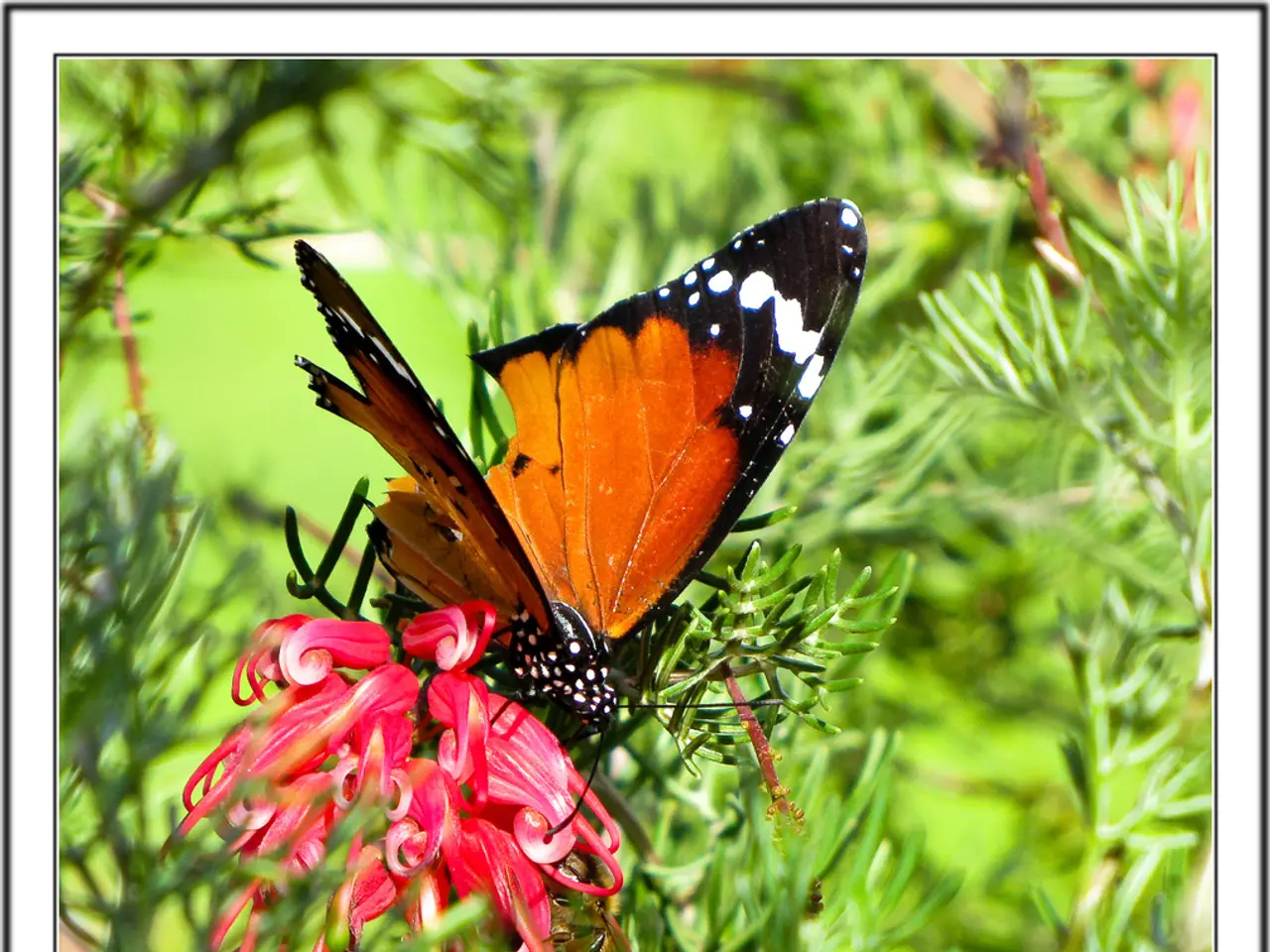Designing an Eco-friendly Sanctuary for Threatened Animal Species
In an effort to support endangered pollinators and wildlife, garden enthusiasts are encouraged to transform their outdoor spaces into thriving habitats. By providing food, shelter, water, and safe breeding sites while avoiding harmful chemicals, gardens can become sanctuaries for various species.
One of the key elements of creating a successful garden habitat is the selection of plants. Opt for a diverse mix of native plants with varied colours, shapes, and bloom times to offer continuous nectar and pollen across the growing season. Include both nectar plants and host plants that support all life stages of pollinators, including caterpillar host plants. Avoid invasive species like butterfly bush; instead, consider blazing star (Liatris spicata), New York ironweed (Vernonia noveboracensis), and butterfly weed (Asclepias tuberosa).
Habitat elements, such as shelter and nesting sites, are equally important. Provide pollinator houses like bee houses for solitary bees, butterfly houses, and ladybug shelters in sunny, sheltered locations about 4-6 feet off the ground. Maintain patches of bare soil for ground-nesting bees, and preserve dead wood, brush piles, and hollow stems as natural habitats. Use restorative mulch (a blend of bark and compost) but avoid thick layers near nesting sites to allow access for ground nesters. Allow some areas to remain undisturbed, including perennial plants and woody debris, to offer winter shelter and breeding sites.
Water sources are essential for various species. Provide shallow water sources with safe landing spots, such as saucers or plates filled with water and pebbles, refreshed regularly to prevent mosquito breeding. Position water near pollinator-friendly plants to encourage use. Alternatives like small ponds or bee cups that can be watered alongside plants are also effective.
Avoiding pesticides is crucial in maintaining a healthy garden habitat. Do not use pesticides as these harm pollinators and beneficial insects. Instead, embrace natural pest control methods, tolerate some plant damage, and support beneficial insect shelters like ladybug houses. Practice sustainable gardening techniques such as composting and mulching to improve soil health and reduce pests naturally.
By combining diverse native plants, shelters, safe water, and pesticide-free practices, your garden can become a thriving habitat that supports and helps recover endangered pollinators and wildlife populations. Collaborate with the community on wildlife-friendly initiatives, such as creating wildlife corridors, and educate others about the importance of supporting endangered pollinators and wildlife, inspiring them to create their own garden habitats. Together, we can make a difference in preserving our world's precious species.
By integrating various native plants rich in nectar and pollen into the garden, such as blazing star, New York ironweed, and butterfly weed, one creates a continuous food source across seasons for endangered pollinators (environmental-science). Concurrently, offering pollinator houses, patches of bare soil, and preserving dead wood provides essential shelters and nesting sites for these vital species (lifestyle, home-and-garden, gardening).




